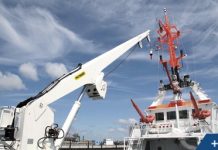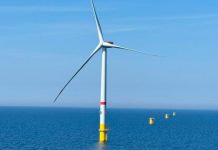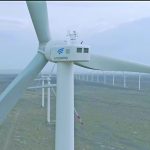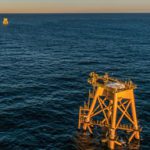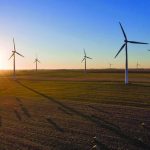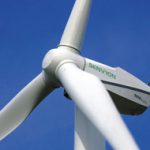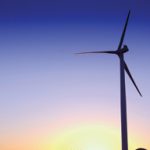As the world’s number-one producer of wind energy, the United States is making progress toward securing a low-carbon future for generations to come; but our work is not done.
Wind energy has proven to be an important part of our nation’s energy portfolio. Since the 1980s, wind energy has been the fastest growing renewable energy source in the U.S. And in recent years, wind’s contribution to meeting America’s end-use electricity demand has tripled from 1.5 percent in 2008 to 4.9 percent in 2014. With more than 66 GW of wind energy generating capacity installed to date, electric system operators and utilities throughout the country now increasingly adopt wind power as part of a diverse electricity generation portfolio.
In March, the Energy Department—in conjunction with a broad set of stakeholders including the wind industry, academia, and non-governmental organizations—released the highly anticipated Wind Vision: A New Era for Wind Power in the United States report. This report quantifies the benefits of a robust wind energy future through 2050. The Wind Vision Report defines a scenario in which 10 percent of America’s electricity comes from wind energy by 2020, growing to 20 percent by 2030, and continuing on to 35 percent by 2050. Taking into account the economic competition of all sources of electrical generation, the availability of supporting resources, policies in effect today, access to transmission, and growing demand, the Wind Vision report finds that wind energy is one of the most viable options for continued electric-sector growth. By 2050, wind energy has the potential to reduce retail electricity rates by 2 percent, avoid more than $400 billion in costs caused by carbon emissions, support 670,000 jobs, and save more than 260 billion gallons of water that would typically be used by the electric sector.
Ultimately, the Wind Vision demonstrates the economic value that wind power can deliver for the nation, a value far exceeding the costs of deployment. Moreover, it demonstrates how wind’s environmental benefits can address key societal challenges such as climate change, air pollution, public health, and water scarcity. At the same time, a growing wind industry can provide for a robust U.S. manufacturing presence yielding hundreds of thousands of jobs, in addition to land-lease and tax revenues in local communities across the nation. Realizing this future will require new tools, priorities, and emphases beyond those forged by the wind industry in growing to supply 4.9 percent of current U.S. electricity demand, but it lies within reach and offers the opportunity for a legacy that will provide benefits for generations to come.
READY, SET, GROW
The U.S. wind industry supply chain comprises a range of companies spanning the life cycle of a wind energy project, from initial resource assessments through long-term operations and maintenance. The rapid increase in turbine installations since 2006 has spurred equipment manufacturers to establish regional offices and develop local supply chains, and has expanded U.S.-based manufacturing and assembly capacity. By the end of 2013, the U.S. domestic supply chain had the capacity to produce 10,000 blades and 4,300 towers annually — impressive numbers driven by the record-setting installations of 2012.
SCALING UP
Wind turbines are reaching enormous sizes with 97-meter-diameter rotors and hub heights of 80 meters, making previously un-developable areas suitable for wind energy deployment. Building upon the findings of the Wind Vision report, in May 2015 the Energy Department released Enabling Wind Power Nationwide, a report showing how the U.S. can unlock the vast potential for wind energy deployment in all 50 states. Enabling Wind Power Nationwide finds that by increasing wind turbine rotor diameters to 124 meters and hub heights to 110 and 140 meters, the U.S. can increase the technically developable area for wind energy development by 54 percent and 67 percent respectively. These hub height increases would help bring the total developable area in the U.S. — including low-wind resource regions such as the Southeast — to 1.8 million square miles, about half the country’s total land area.
WE CAN’T LOSE MOMENTUM
Actualizing many of the benefits defined in the Wind Vision and Enabling Wind Power Nationwide reports requires the continued growth of the wind industry. However, today’s policy uncertainties are impacting demand, which can cause a ripple effect on the supply chain. For example, there may be a surge of wind projects commissioned in 2015 and 2016, those that started construction in 2014 to meet the latest Production Tax Credit deadline. Currently at a tipping point, the manufacturing sector will need to support the capacity additions necessary for building next-generation wind turbines, in addition to maintaining support for those in production today. We can’t afford to take a step backward.
In order to produce wind turbines at the sizes and volumes we need to stay competitive, the industry must use our current manufacturing and installation capacity as a stepping stone for further innovation and expansion. With wind power prices at an all-time low, the industry is positioned for the growth America needs to remain a global leader in clean energy production. Past success can indeed prove itself a strong predictor of future performance.

















